Neural impulses flash through our brains at up to 120 meters per second. You’re used to thinking fast. And the time it takes to go from decision to action can make all the difference. We believe software should help you work at the speed of thought – not hold you back. We’re taking the possibilities further, creating software that works the way you want to. Making automation smarter through machine learning. Giving you tools that free up time and resources. Cutting out repetitive tasks to enable more effective use of your clinical time. Together we are on a journey to optimal patient care, supported by resources that are as intuitive as they are efficient and powerful. You think it, we’ll enable it.
Segmentation the way it should be
RayStation provides you with fast and user-friendly tools to efficiently and accurately contour the patient in the treatment planning process. Contouring OAR. It includes a comprehensive toolset ranging from manual tools to high-end semi-automatic and fully automatic contouring tools. Discover some of our customers’ favorite tools below.
Smart brush and smart interpolation
The image-guided smart brush and smart interpolation facilitate contouring by snapping to image features and can help delineate organs and targets using only a few contours. See video
Structure templates
Structure templates allow you to create ROIs with predefined name, type, and color which allows for consistently labeled structure sets according to the clinics’ protocol. Structure templates may also include geometries including density overrides for quick retrieval of support structures.
ROI algebra
With ROI algebra, you can create derived ROIs using Boolean expressions and margins. A derived ROI remembers its expression and will automatically detect when it needs to be updated. Derived ROIs also goes into structure templates, saving you the time of specifying complex expressions. See video
Model-based segmentation (MBS) delineates organs automatically using statistical shape models for different body sites. The adaptation to new image data utilizes a combination of greyscale gradients and shape statistics.
Smart brush and smart interpolation
The image-guided smart brush and smart interpolation facilitate contouring by snapping to image features and can help delineate organs and targets using only a few contours. See video
ROI algebra
With ROI algebra, you can create derived ROIs using Boolean expressions and margins. A derived ROI remembers its expression and will automatically detect when it needs to be updated. Derived ROIs also goes into structure templates, saving you the time of specifying complex expressions.
Multi-atlas based segmentation in RayStation
Multi-atlas-based segmentation (MABS) lets you use multiple atlas templates to automatically contour the patient. It’s fast and easy to build your own atlas templates with both anatomical and derived structures. In addition, multiple atlases can be fused for increased accuracy.
RayStation uses in-house deformable registration algorithms to propagate contours from multiple datasets to the anatomy you wish to contour. Advanced automation makes the process fast, simple and accurate.
Advantages
- Achieve a high degree of automation and consistency
- Create your own templates for optimal accuracy
- Greater robustness compared to single-atlas approach
How it works
Existing data from the clinic database is used to create templates with multiple image sets – atlases. The geometries contained in each atlas can be manually contoured or generated with MBS.
New image data is segmented by locating the best-matching atlases through rigid image registration. For all matching atlases, a deformable registration is computed and the structures are deformed onto the new image set.
Segmentation results are merged to one result using a fusion algorithm. If MBS regions of interest are available in the template, they may be automatically adapted.
How MABS works
Centre Oscar Lambret, Lille
“The automatic segmentation is a useful tool for handling the technical complexity of head and neck IMRT as well as the daily management of an important patient flow. In head-and-neck cancer, we have gained significantly for the contouring of healthy organs. We will soon begin using multi-atlas-based segmentation in our clinical routine for lymph node delineation.”
Xavier Liem
Radiation Oncologist, Centre Oscar Lambret, Lille, France

Royal Marsden Hospital, UK
The UK’s Royal Marsden Hospital carried out an assessment of fully-automated atlas-based segmentation for a novel oral mucosal surface organ-at-risk. The center found negligible differences when comparing results for manual and fully automated segmentation, concluding that atlas-based segmentation is a suitable approach for this application. Read the study here
Royal Marsden Hospital
NHS Foundation Trust

Vejle Hospital, Denmark
“With more complex RT, delineation of organs at risk (OAR) has become a mandatory but also very time-consuming task for highly skilled staff. Multi-atlas segmentation in RayStation is a highly promising approach that can minimize the human resources needed for delineating OAR.”
Martin Berg
Head of Medical Physics Clinical Practice, Vejle Hospital, Denmark

Reduce repetitive manual tasks
Huge efficiency gains are possible through automating standard procedures, for example through scripting, protocols and templates. RayStation makes it easy.
Automated breast planning
Automated breast planning in RayStation is a powerful solution that has been shown to boost efficiency, standardization and plan quality, as well as supporting faster adoption of IMRT.
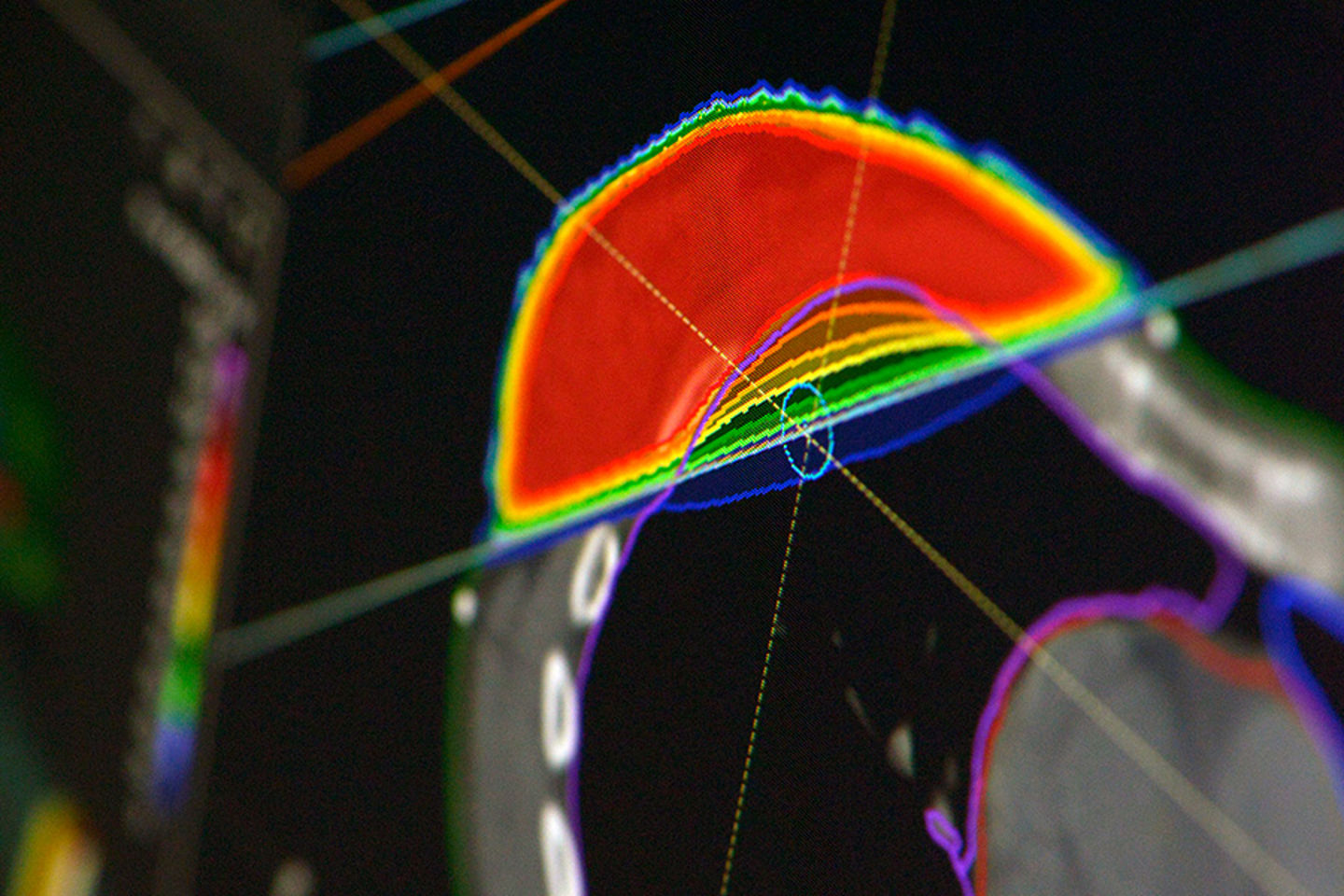
Automated treatment planning with machine learning*
Automated treatment planning in RayStation uses the power of machine learning to save planning time and increase plan consistency. The method has been developed together with Princess Margaret Cancer Centre and comes with pre-trained models as well as with the possibility for clinics to train their own machine learning models for planning.
Register for the upcoming webinar to learn more.
* Subject to regulatory clearance in some markets.
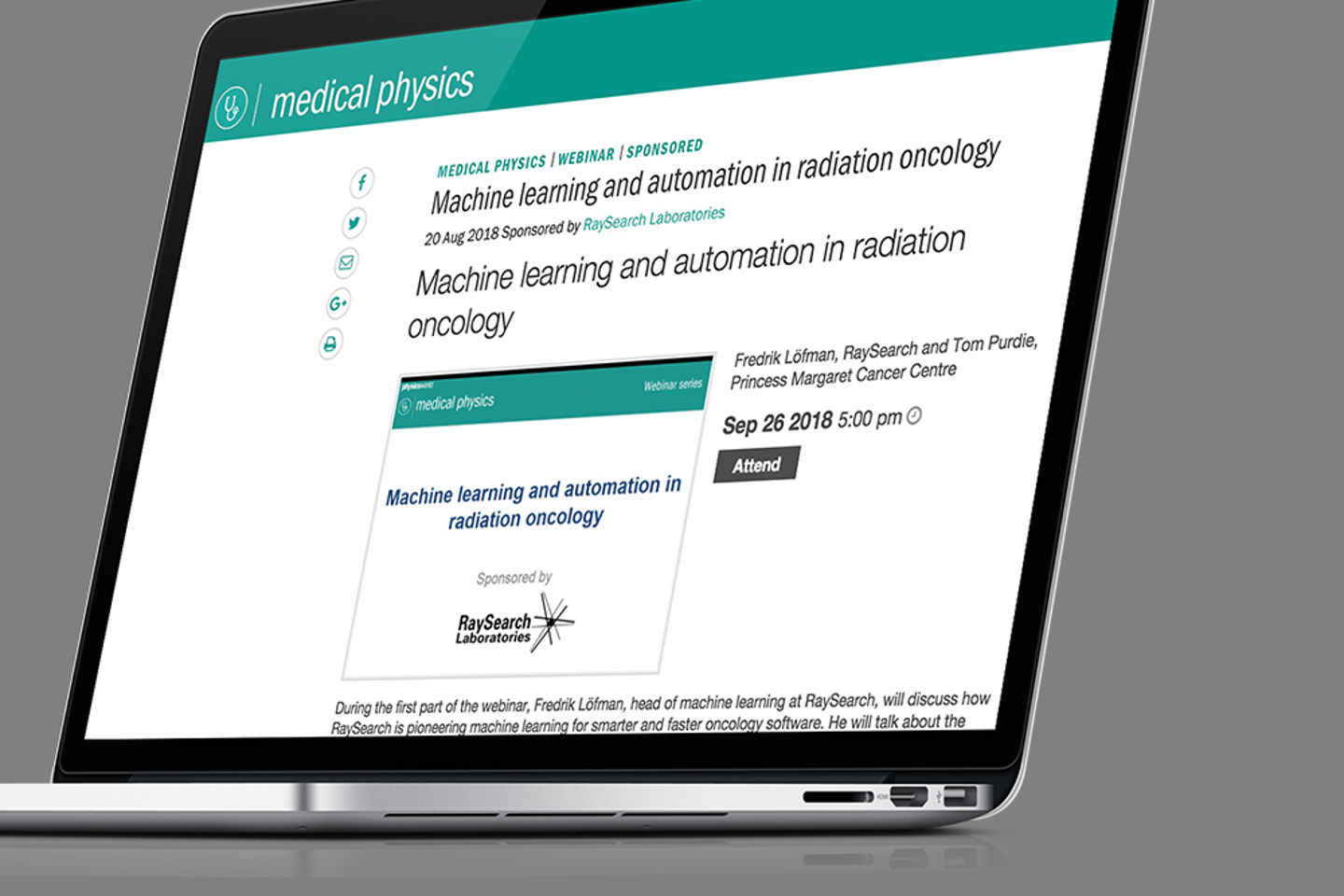
Efficiency through automation: “RayStation is very manageable which makes our lives easier. The automation features through scripting help us remove time-consuming steps. Our dosimetrists can spend more time on making plans better. We simply don’t have to compromise on quality.” Alonso N Gutiérrez, Chief Physicist at Miami Cancer Institute
Read the study here
Consistency: RayStation’s smart automation delivers measurable clinical benefits. A key one is improved plan consistency; even where experience levels vary, centers can achieve consistent high quality and minimize variations. See the example for automated breast planning.
Read the study here
Speed and Quality: Automation makes it possible to increase plan quality while shortening time to treatment. Plan quality has been shown to increase with higher speed.
Read this study to learn more
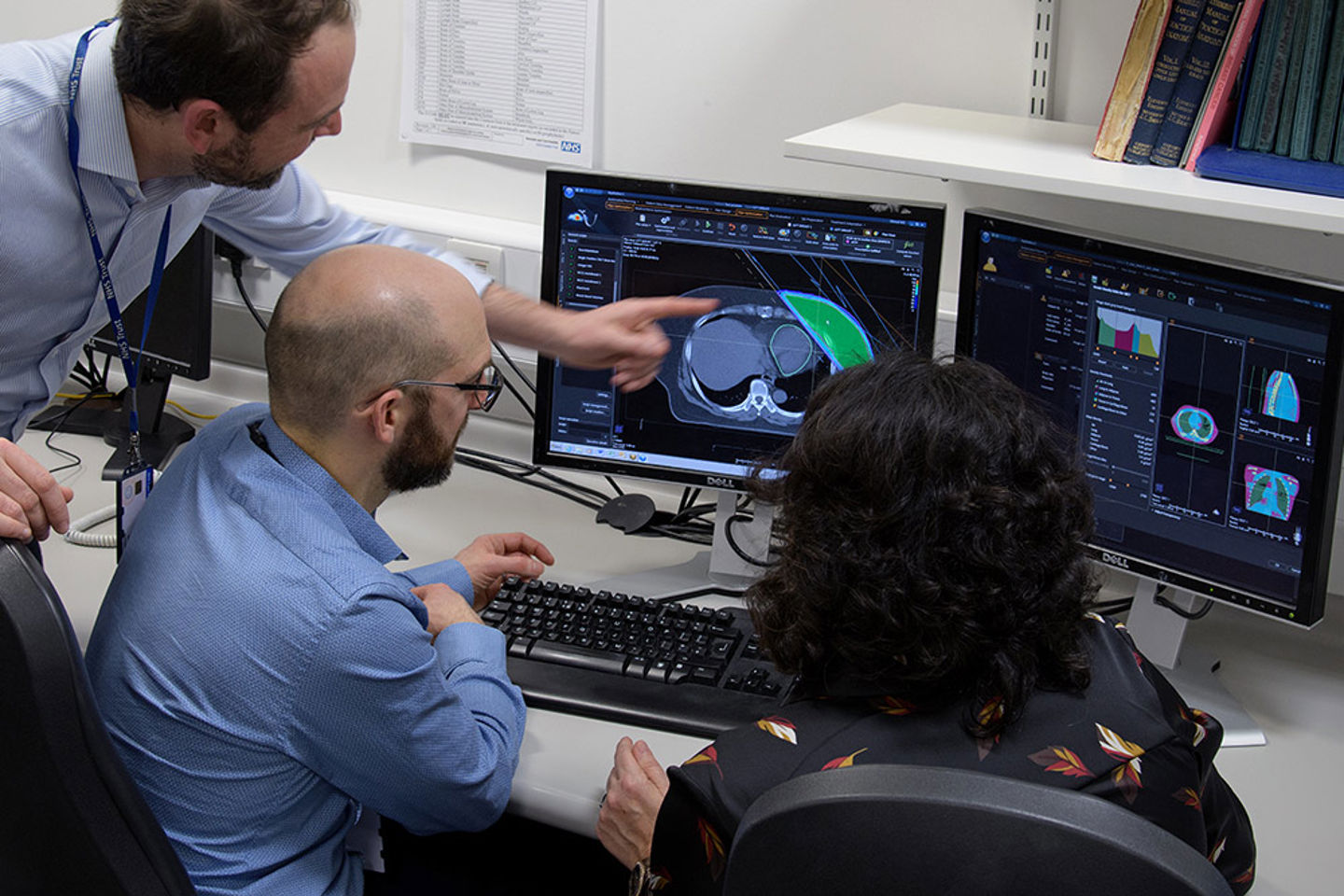
RayCare enables automated active workflows across the oncology disciplines. These can be tailored to your protocols to ensure high consistency and quality.
Proactive automation
RayCare workflows are designed to be highly configurable, and can be customized to the needs of each center. With active workflows, tasks for specific staff members can be created automatically, triggered by defined events. By continually monitoring the status of the workflow, RayCare will know the moment a task is completed and actively select the next step in the process without any further user interaction.
For example, an action such as uploading an image can be set to automatically create a task for a doctor to review the image. The system will thus ensure that actions are always taken in the correct order according to the clinic’s protocols.
Flexible and user-friendly workflow management
- Advanced workflow and task management based on user roles
- Customizable to the unique needs and processes of each clinic
- Tasks automatically direct the user to the correct workspace to complete the required activity
- The system actively monitors the workflow and automatically identifies when a task is completed
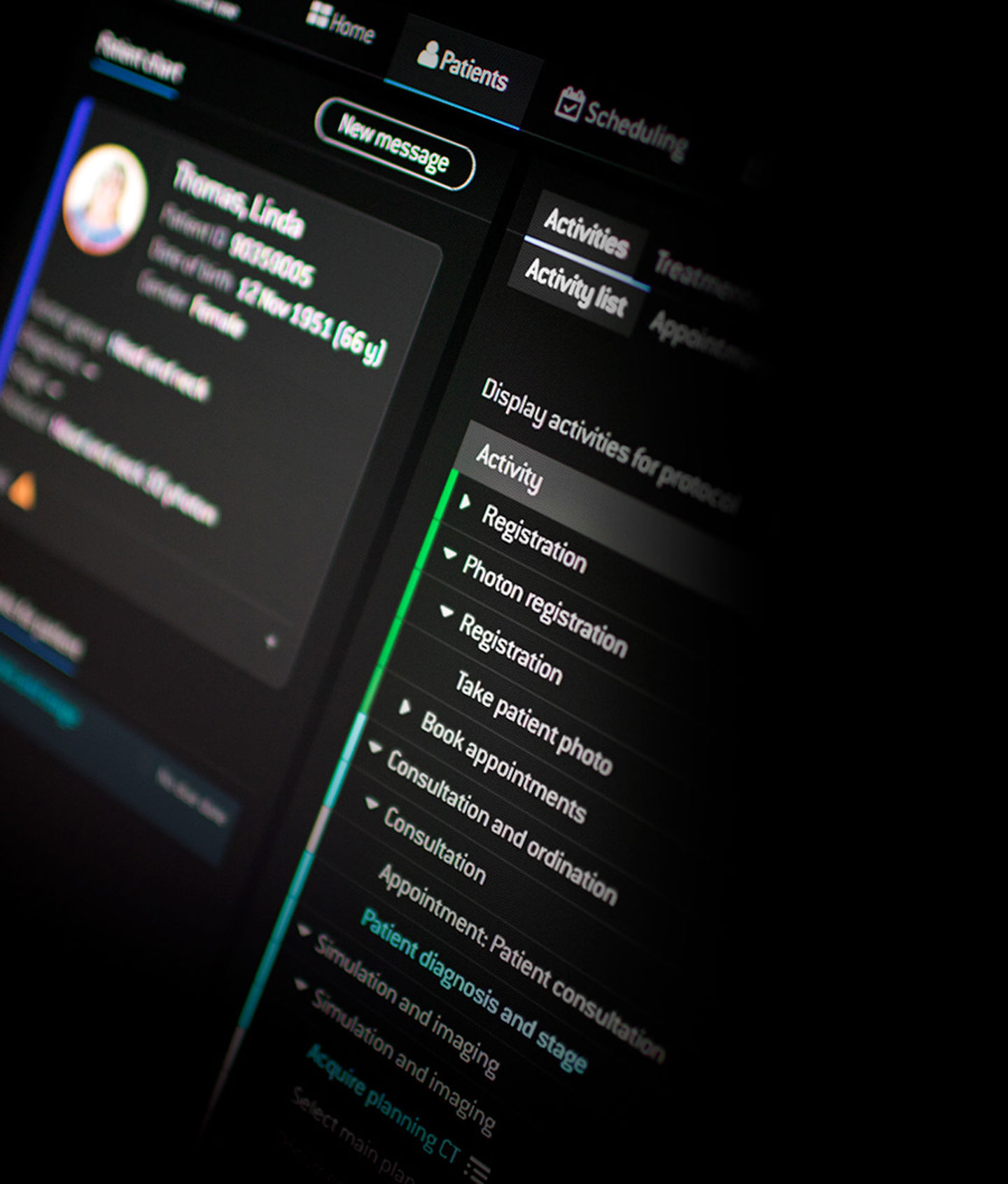
RayCare and RayStation are designed to work seamlessly together, supporting a smooth and cohesive planning, treatment and ongoing care experience.
Better together
- Planning tasks open RayStation services in the right workspace with the patient and image already selected
- Triggers in RayStation will indicate completion of key tasks – status of contouring, dose optimization and other planning steps
- Task and data completion drives the workflow in RayCare and alerts users to tasks that are ready to start
- Task automation reduces the number of manual steps
- Users can communicate through RayCare and auto-document everything related to the planning activities
- Unified data access – all relevant data is directly available from within both RayCare and RayStation
- The planning dashboard whiteboard view provides a clear overview of all planning tasks
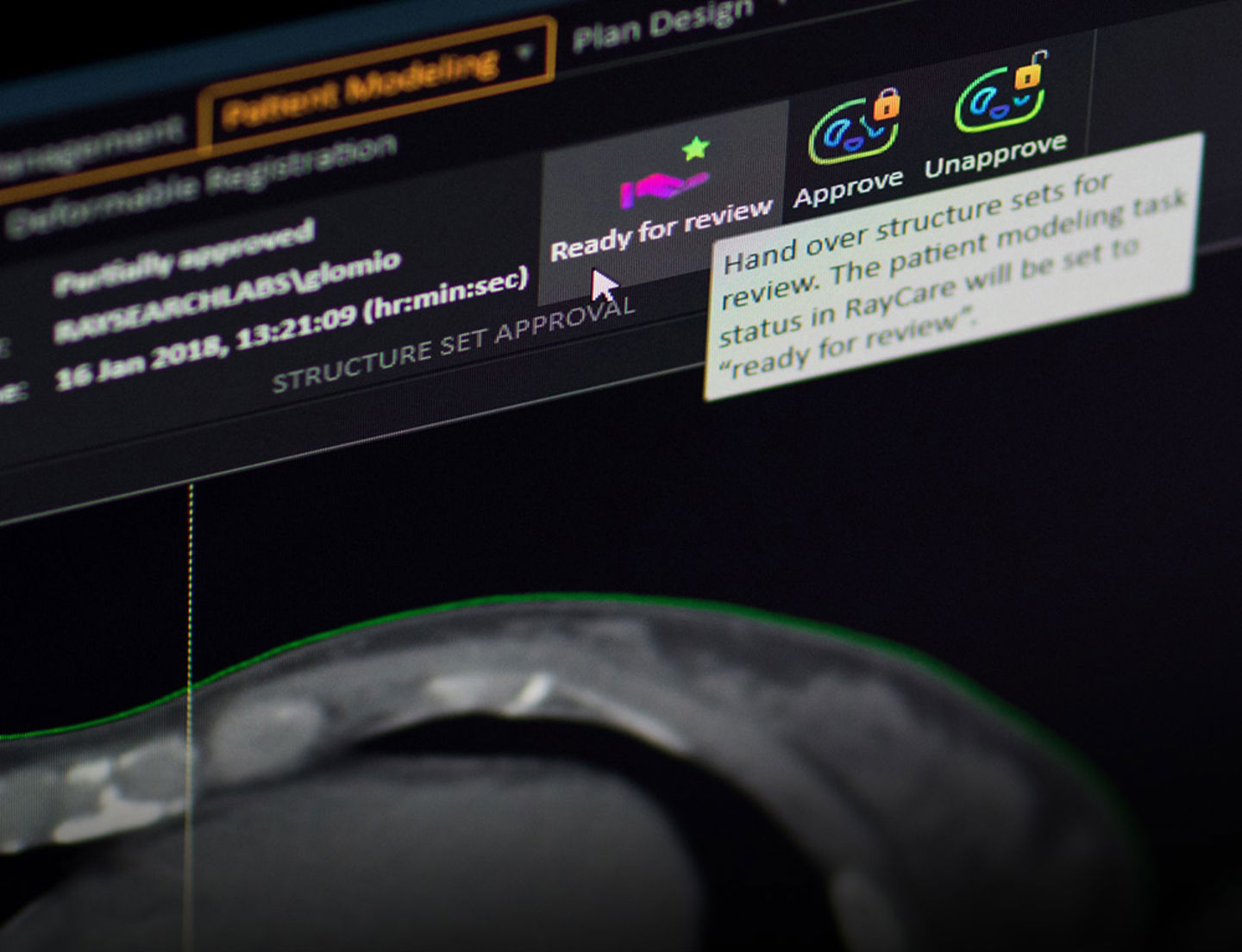
RayCare’s scheduling capabilities allows resources to be used more efficiently. The advanced rule-based scheduling engine makes it easy to select the first and best available timeslots for any appointment.
Task-based and rule-based scheduling
RayCare is designed to provide total control over treatment scheduling and use of resources. It will ensure the optimal allocation of treatment machines and clinical personnel, accounting for treatment needs, clinical staff schedules and other key parameters. Should resources become unavailable, advanced rescheduling functionality enables batch rescheduling for efficiency.
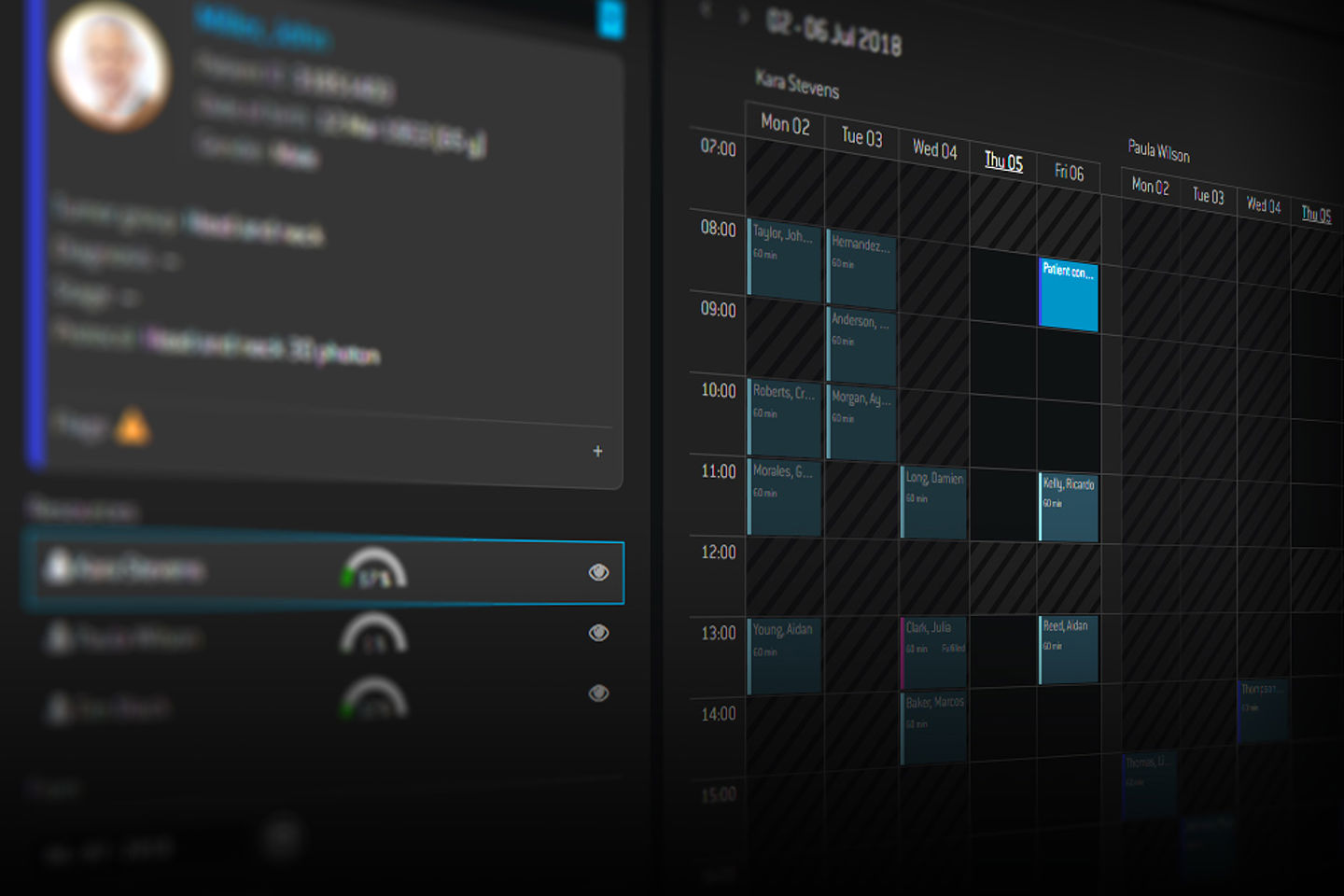
Improved communication:
RayCare supports smooth and continuous communication between clinical staff in the RT department.
Time savings:
Using RayCare in combination with RayStation reduces the number manual steps, for example in managing images and documentation, and saves valuable clinical time.
Tailored approach:
The workflow is perfectly matched to the clinic’s approach and protocols.






